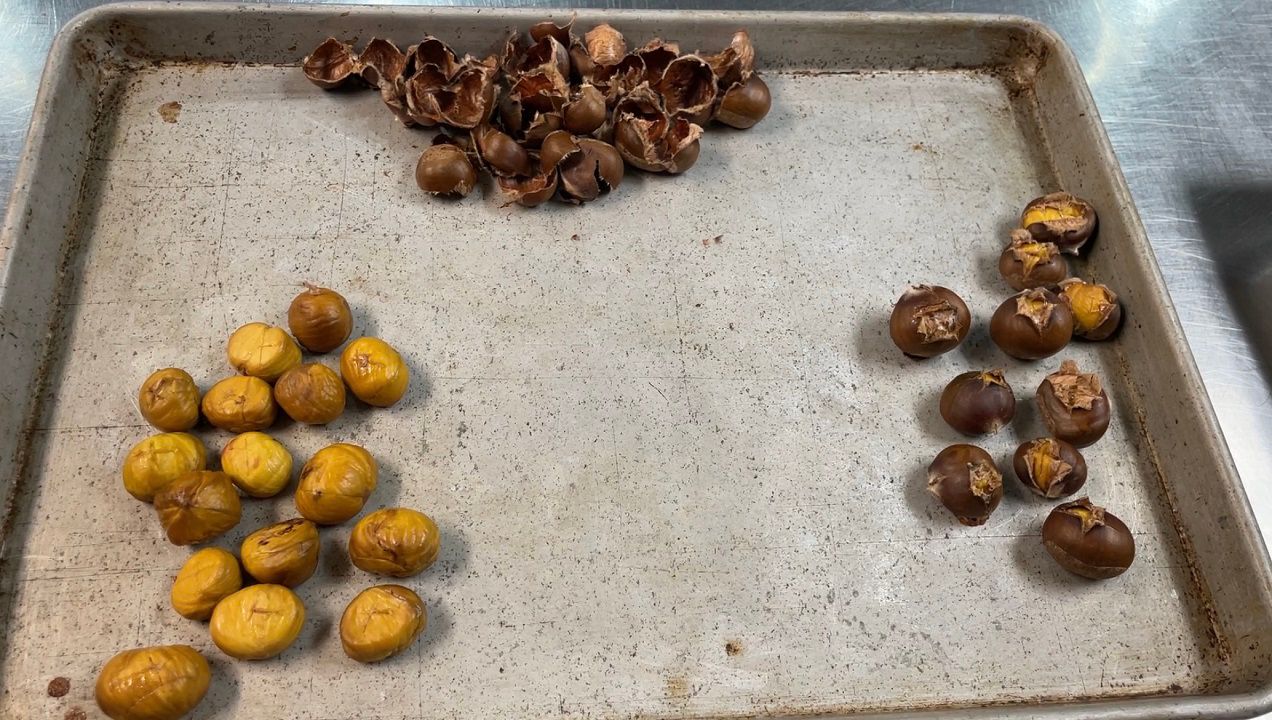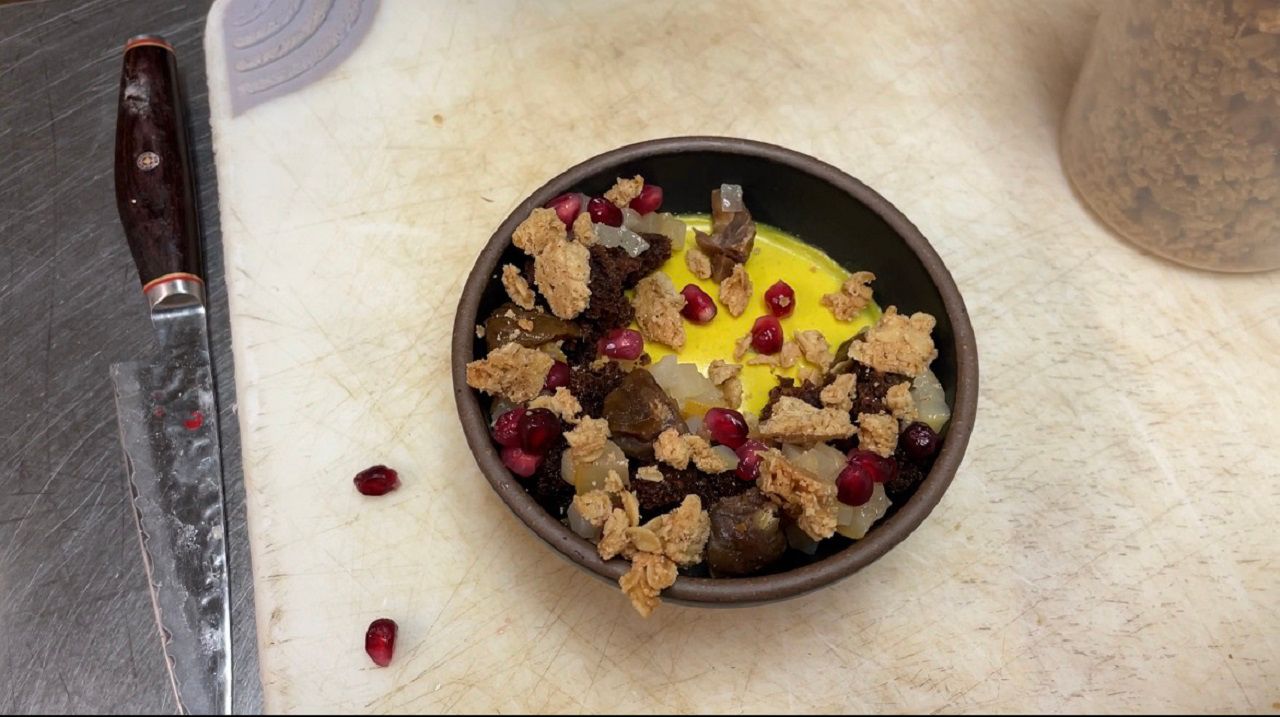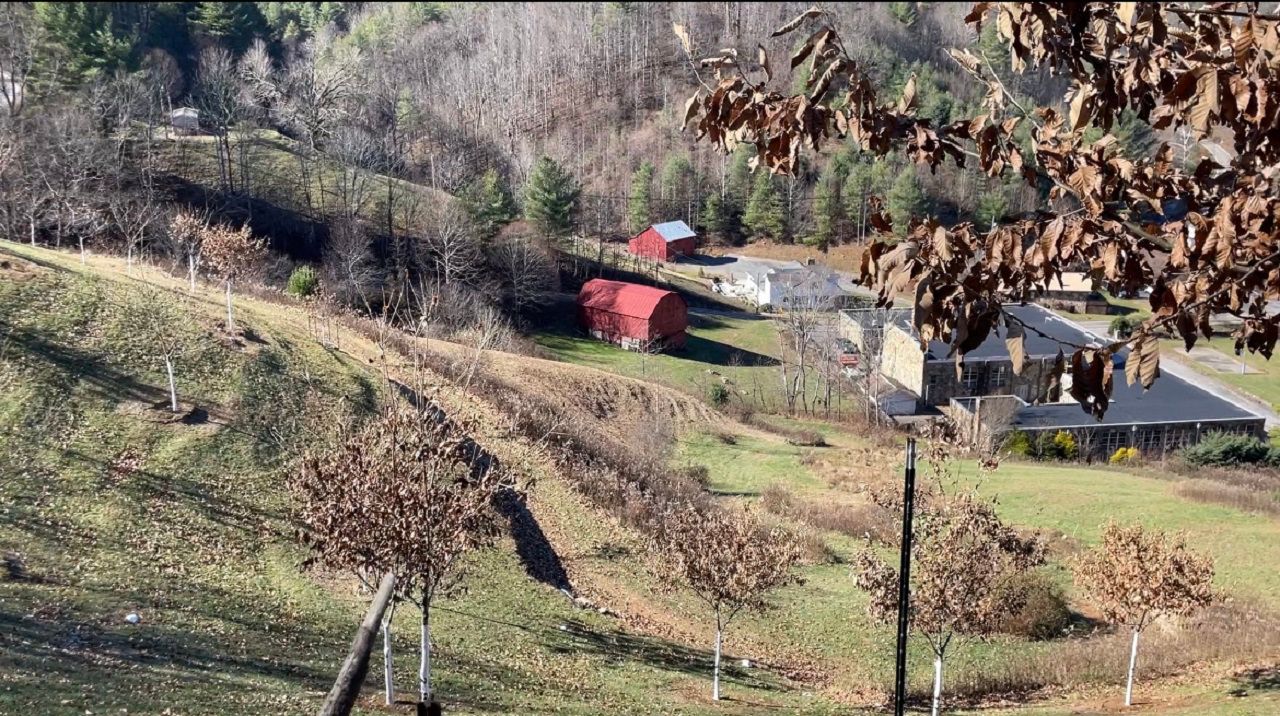BURNSVILLE, N.C. — Ron Fritz is helping bring a classic American taste of the holidays back to life with his American-Chinese hybrid chestnuts.
What You Need To Know
American chestnuts were wiped out by a blight in the early 1900s
A North Carolina farmer grows American-Chinese hybrid chestnuts
He sells them to several businesses in the mountains
He owns Mountain Grown Chestnuts, a chestnut orchard where he grows 74 chestnut trees in Burnsville, North Carolina. During the early 1900s, American chestnuts were wiped out by a blight, which is why Fritz grows the mix of half American, half Chinese chestnut trees.
“I design experiments and treatments on the trees and measure their response,” Fritz said.

Chestnuts have several threats to the fruit, like chestnut weevils, a bug, and the ambrosia beetle. He’s lost three trees because of the beetle.
“We have something called an ambrosia beetle that will kill a tree instantly,” Fritz said. “I read somewhere that everything that walks, crawls or flies loves to eat chestnuts. Every part of them. They’re delicious.”
He has been growing chestnuts for the past six and a half years, and a background in science helps them thrive. In order to help the chestnuts last past their harvest in September, Fritz refrigerates them.
“Starch converts to sugar, and it's temperature and humidity dependent. They’ll reach their full sugar in about three days at 72 degrees,” Fritz said.
While the American chestnut used to span the area around the Appalachian Mountain range, Fritz is using his 74 trees to re-introduce the taste into North Carolina by selling his chestnuts to local eateries like Chestnut Restaurant in Asheville.
This is Mallory Foster’s first time using American-Chinese chestnuts. She is the Executive Pastry Chef at Chestnut Restaurant.
“It’s kind of exciting. No one eats them, no one really knows what they are,” Foster said.
She looks at the American-Chinese hybrid chestnut as a new challenge, compared to other nuts.
“They get sweet and soft. They’re very unique, and I’m excited to figure out how to highlight them,” Foster said.
She is candying the chestnuts to accompany her desserts this holiday season. In November she created a golden milk panna cotta dessert topped with candied chestnuts.

“I get this big bag like I’m Santa Claus, and then I stand here for four hours scoring, roasting, peeling and steeping in simple syrup for multiple days,” Foster said.
In January, Foster will create another dessert with chestnuts.
The uniqueness of the nut is what Fritz is trying to maintain.
“The American chestnut was known to be the sweetest of all the chestnuts and of course, the blight still exists today, kills them all. So that’s what I’m trying to do is emulate that nut from 120 years ago,” Fritz said.




